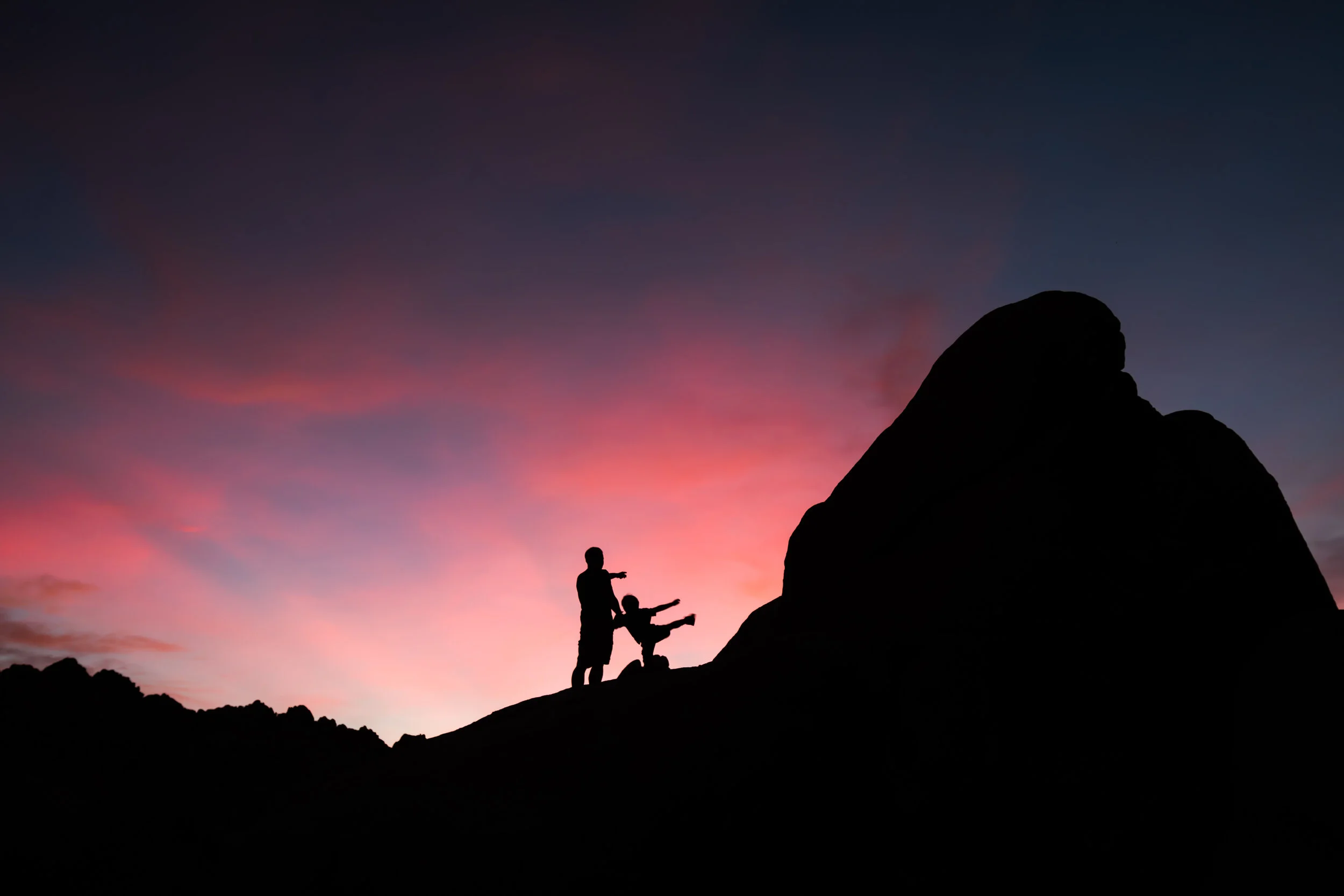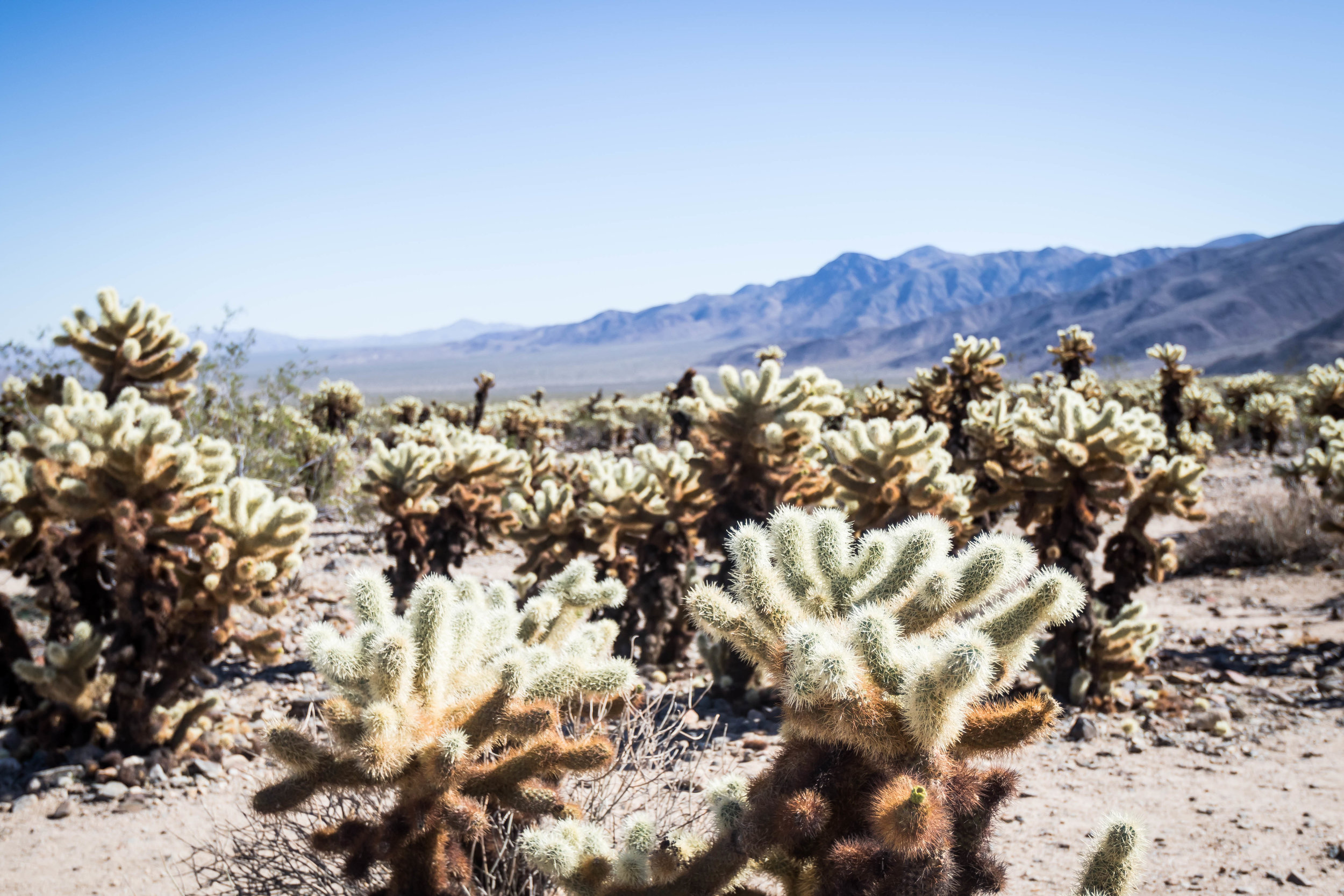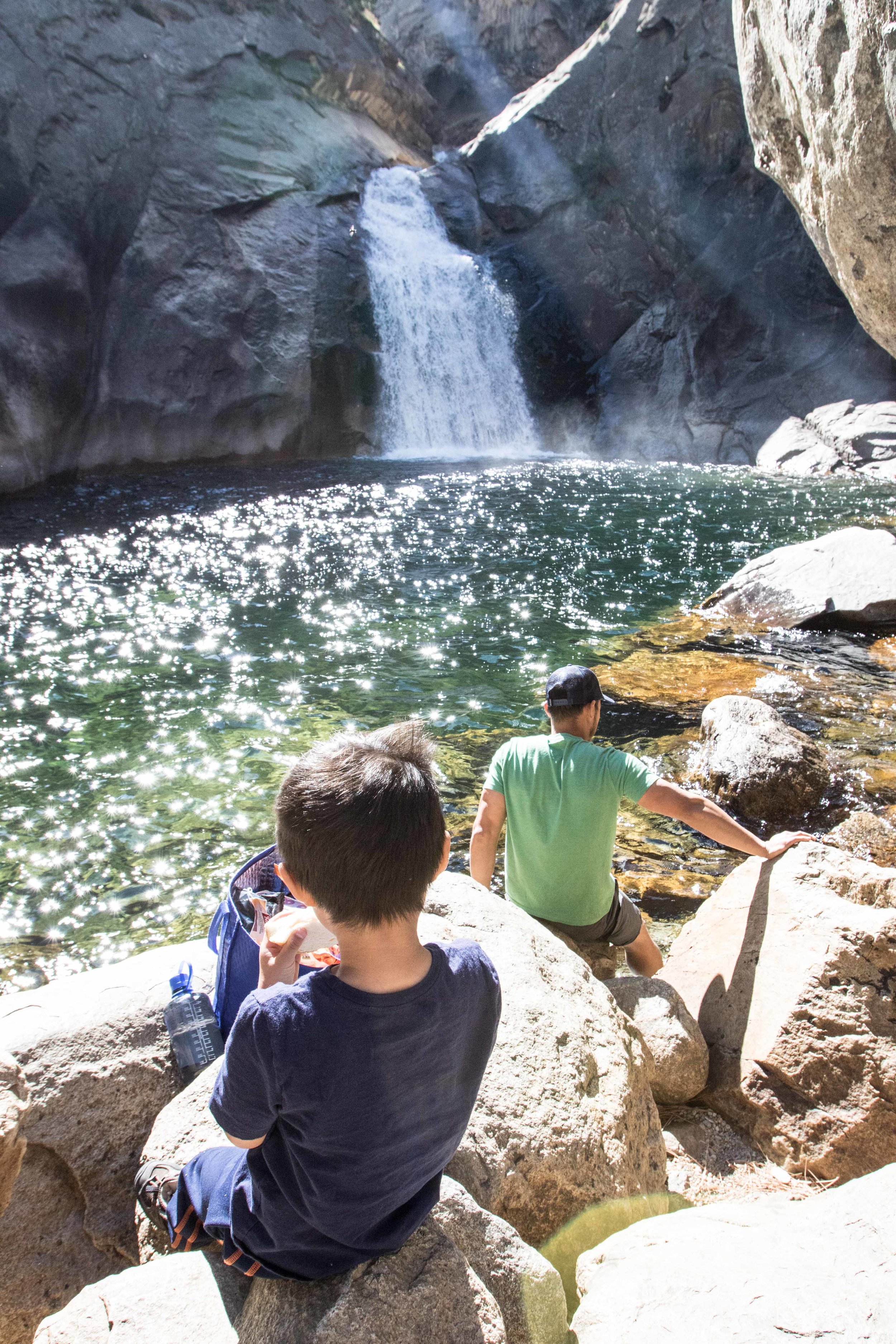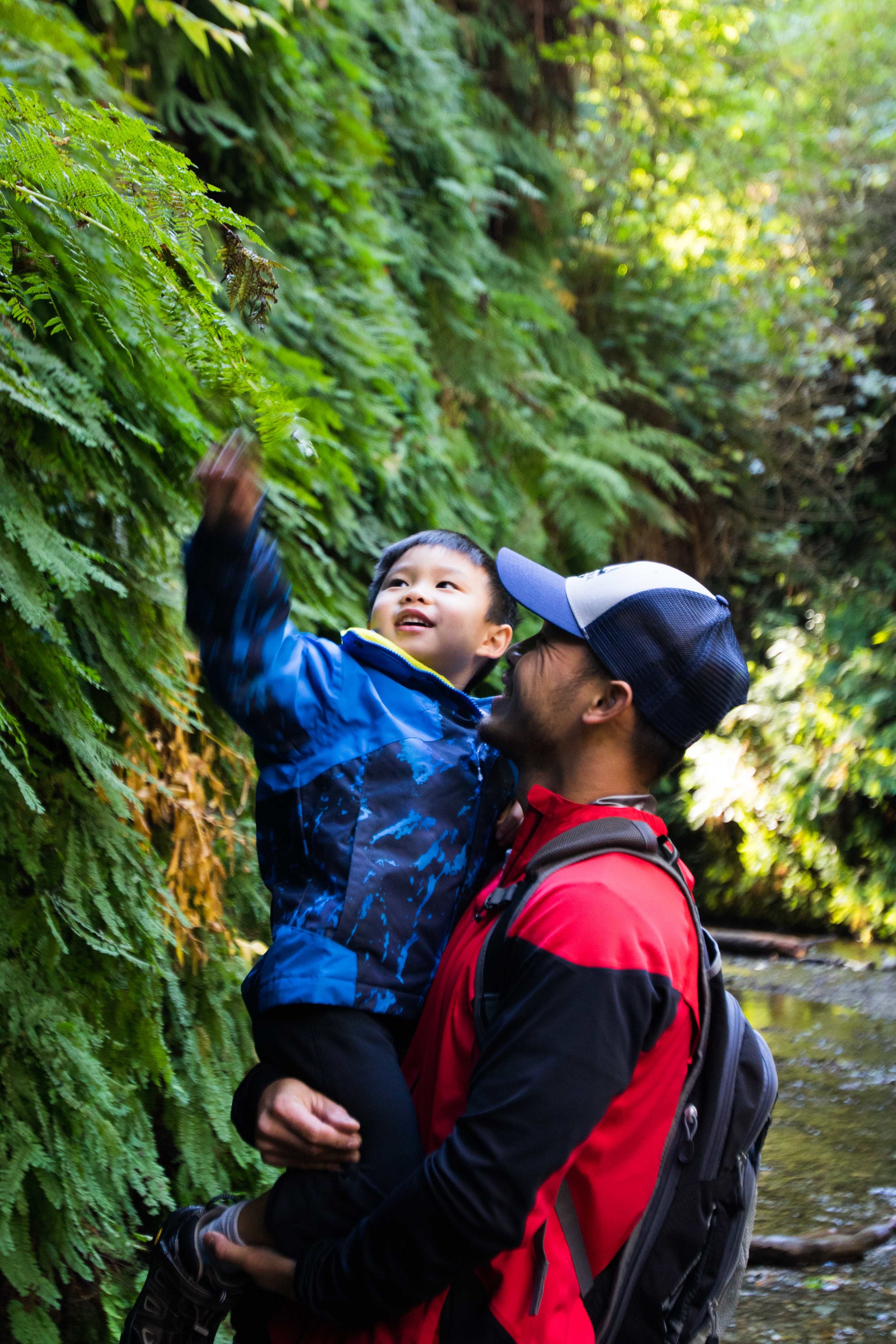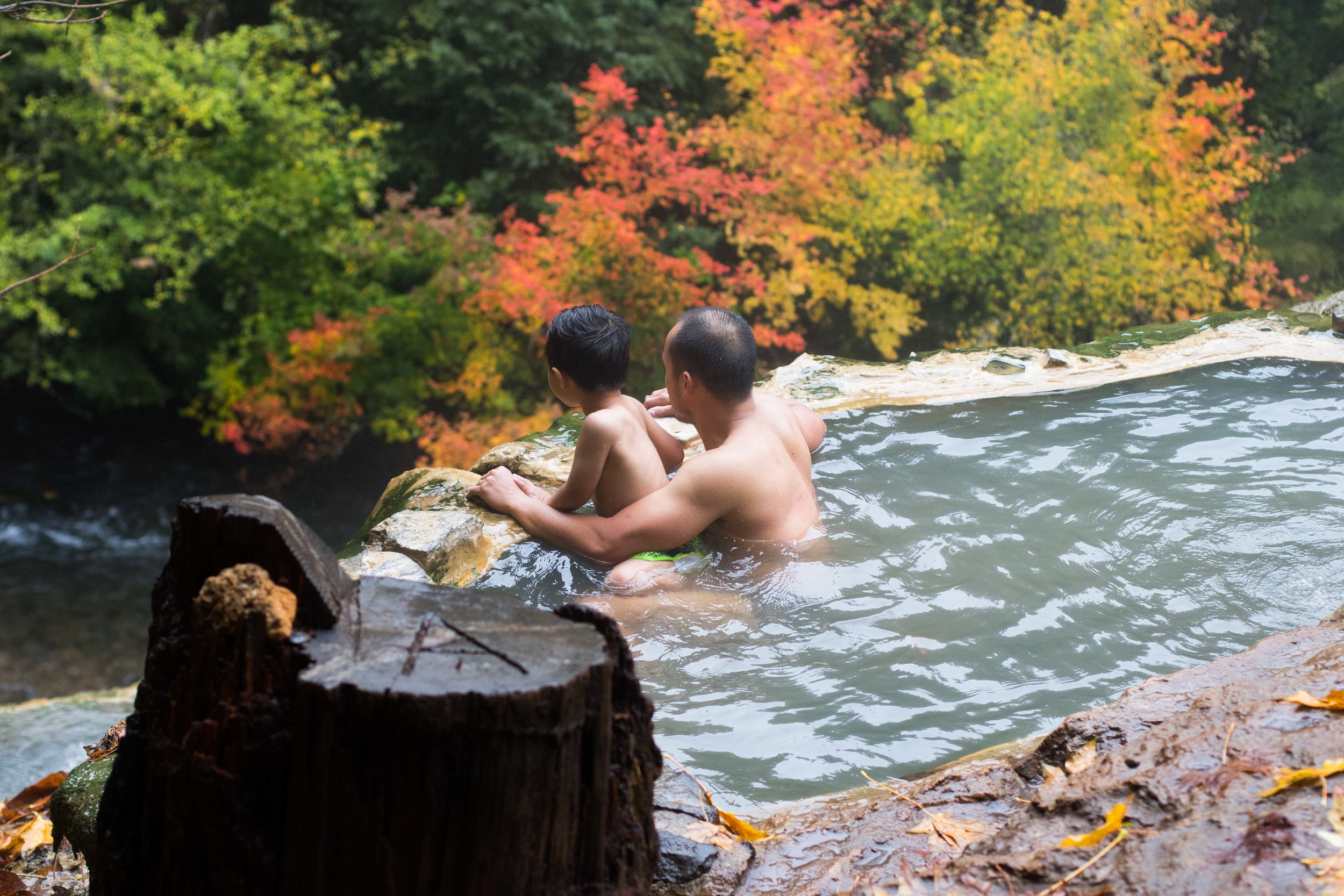Overview
Death Valley is the largest national park outside of Alaska with countless exploration and experiences to share for all ages. The park covers 3 million acres of Wilderness that include majestic sand dunes, twisted and narrowed colorful canyons, rocky peaks, stunning salt flats, and more.
Accessibility
All of the major highlights at Death Valley is wheel chair accessible and very kid friendly. You can literally see the beauty of Death Valley from your car or a quick walk outside your car.
Death Valley is close to 2 major cities (LA and Las Vegas) so getting here could potentially be a day trip if you leave early in the morning and stay late in the evening.
Death Valley is open all year around but summer is blazing hot and can get up to 130 degrees F so we recommend going in the fall or winter or early spring. We were here in November and it was 79 degrees during the day and cool at night. It was perfect weather.
Park Highlights
Sand Dunes
Mesquite Flat Sand Dunes – Death Valley is home to 5 sand dunes, with one of them being perhaps the tallest in North America, Eureka Dunes. While at Death Valley, we visited Mesquite Dunes because it was 5 miles drive from Stovepipe Wells Campground. Mesquite Dunes is in the middle of the valley and offers a stunning 360 view of the different mountain ranges that overlook the park. Harvey loved the dunes so much that we often found him swimming down the dunes and rolling wherever gravity takes him. If you plan to visit the dunes, please bring sandals and be prepare to hike if you want to be on/near the highest peak.
Badwater Basin
Badwater Basin– This is the lowest point in North America, 282 ft below sea level. The basin is a surrel landscape of vast salt flats. Harvey was fascinated by the salt and had to taste test a few areas of the flats. He also enjoyed walking on top of where the salt raises up on the flats.
Dante’s View – A breathtaking drivable viewpoint in the park that offers a mountain-top overlook that is more than 5,000 ft above the floor of Death Valley. This vista point is highly recommended for both sunrise and sunset on a clear day.
Artist’s Drive – This is a scenic 9 miles loop drive that takes you through colorful volcanic and sedimentary hills. Towards the middle of the loop, there are hiking trails that allows you to see the colorful sediments that creates the beautiful mounts. Unfortunately we only had 1 hour to spare for this drive and therefore didn’t get a chance to hike any of the trails. We will definitely be back and hike a trail or two in the future.
Zabriskie Point
Zabriskie Point – This is a beautiful vista point for catching both sunrise and sunset on a clear day. The beautiful golden colored badland hills is probably one our suggested must-see sights because of its ease of accessibility, which is a 0.25 mile hike from the parking lot that can’t be missed if you’re coming to the park from the east entrance, Las Vegas.
Twenty Mule Team Canyon – If you’re interested in a fun drive through beautiful golden canyons, the Twenty Mule Team Canyon loop is an easy one not to miss. This loop is less than 5 miles east of Zabriskie Point, and offers a close look at Death Valley’s vibrant golden canyons. There are a few areas with steep and curvy trails, so please leave your 25-ft trailer at the campground.
Two other areas that we visited while driving through the park were Devil’s Golf Course and Salt Creek. Devil’s Golf is a quick drive to and checkout point and Salt Creek has a 1 mile loop walk on top of a creek that runs through the park. During the wet season, pupfish can be found at Salt Creek.
We were unsuccessful at being able to visit Titus Canyon and Mosaic Canyon. The drive-in trail to the trailhead for Mosaic Canyon is under renovation, so if you still want to visit the canyon, you’ll have to hike an additional 2 miles from the main road to the trail head. Titus Canyon requires a 1 mile off-road drive from the main road to the trailhead so please be prepare for some rocky driving. I would recommend an 4x4 with some clearance on this road. If you just have a sedan, please drive slowly and navigate around large rocks.
Lodging
Wildrose Campground – We stayed at Wildrose campground because it was the closest campground from the west entrance. Wildrose campground is one of several free campgrounds in the park. Wildrose offers a phenomenon snapshot of the milkyway because of its pitched black skies. We would recommend staying at this park if you’re coming from the west entrance and want to see a lit up sky. The road to this campground is not well maintain and is pitched black at night so please drive slowly and be prepare to navigate around potholes.
Stovepipe Wells Campground – We stay at Stovepipe Wells our second night because it is near some of the places we wanted to visit, like the Mesquite Flat Sand Dunes and Mosaic Canyon. Additionally, Stovepipe Wells also has gas and facilities if you’re looking for a warm shower and a convenience store.
Furnace Creek Campground – We then stayed at Furnace Creek because of its vicinity to additional places that we wanted to visit near the east side of the park, such as the Salt Flats and Zabriskie Point. Furnace Creek is a very large campground, but do fill up during peak season so please plan accordingly and come early to snatch a site if you don’t already have a reservation. The Ranch is a resort down the road with a very large and warm swimming pool and shower for $5/person, and the main visitor center is next door to the campground.
Closest Cities to the Park:
The closest major city to the east entrance of Death Valley is Las Vegas, which is 123 miles. Closest major city to the west entrance of the park is Los Angeles, which is 218 miles south west of the park.
Recommended Length Stay: at least 3 days and if possible 5 days or more.
Would we be back? Definitely yes and spend more time in the park.
For additional photos, click here.

